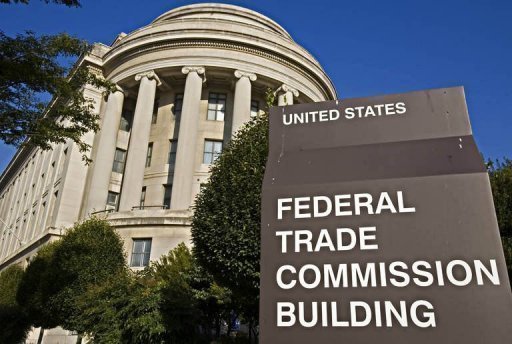Leading FTC Investigation and Enforcement Defense Lawyer Discusses How Marketers Can Best Position Themselves if They Become the Subject of an FTC (or other regulatory) Civil Investigative Demand or Subpoena
A Federal Trade Commission Civil Investigative Demand is an administrative subpoena utilized by the Federal Trade Commission (and other regulatory agencies, such as a state Attorney General) to obtain documentary materials and other information about an investigation into the respondent’s and/or a third-party’s business, conduct, practices and management of any person, partnership or corporation engaged in or whose business affects commerce.
The nature substance of the initial response – including ensuring that the FTC CID attorney through whom the response is made has intricate knowledge of how digital-based advertising and marketing businesses (and/or other substantive investigational subject matter) work – is of vital importance in order to guide respondents through high-stakes and sensitive FTC investigations. As is maintaining credibility and acting in a respectful, professional manner at all stages of the investigative process.
Below are some defense strategies designed to, without limitation, thoroughly evaluate the purpose and narrow scope of the investigation, secure valuable rights, minimize liability exposure and burden on day-to-day business operations, bolster written advocacy submissions, avoid progression to FTC enforcement proceedings (administrative or judicial) and otherwise achieve an optimal resolution.
What Should You do First After You Receive an FTC Civil Investigative Demand?
The Federal Trade Commission has broad powers to investigate unfair and deceptive acts and practices. The FTC’s investigation and compulsory process powers are set forth in §§ 6, 9 and 20 of the FTC Act, 15 U.S.C. §§ 46, 49 and 57b-1. The FTC Rules of Practice are published in the Code of Federal Regulations and set forth procedures governing inquiries, investigations and compulsory processes.
The FTC issues CIDs for the benefit of consumers in order to obtain information from companies and individuals that the agency suspects may have violated consumer protection laws in such a way as to substantially impact consumers. The FTC also frequently issues CIDs to those that are not the targets of investigation, but that may possess material information regarding third parties that the FTC is investigating.
A CID is like a subpoena in that it is a legally enforceable document that seeks documents, tangible things and physical objects, or other information related to an FTC investigation. A CID can also be used to obtain verbal testimony from a witness, and to file written reports or answer to questions.
While FTC CIDs should be taken seriously because they are compulsory in nature, respondents should strive to understand how the FTC works, the agency’s policies and decision-making processes, how to satisfy related legal regulatory obligations and how to avoid the initiation of an FTC enforcement lawsuit.
Stay calm.
It is generally a good idea for respondents to resist the temptation to, themselves, attempt to discuss the investigation with FTC staff counsel or make direct requests to withdraw the CID. The agency does not place a great deal of merit in factual or legal assertions in such conversations with respondents, in any event.
Also, as touched-upon previously, receiving a CID does not necessarily mean that the respondent is a target. Recipients of compulsory process are not always the focus of FTC investigations, but instead can be mere third parties that possess documents or other information that relate to others who are, in fact, targets of FTC investigations.
Even if a respondent is the target of an FTC investigation, a CID is only the first step in the investigative process. Depending upon the facts, law, substantive response positioning, and documents and information provided in response to a CID, an experienced FTC CID attorney may be able to secure closure of the investigation without further action, including the initiation of enforcement proceedings. Or FTC staff counsel may approach a respondent about negotiating legal settlement.
With limited exceptions, such as an agency determination that public interest warrants it, or where necessary to advance the investigation or where the respondent has improperly disclosed the existence thereof, pre-complaint investigations – such as CIDs – are typically not public.
Review the FTC Civil Investigative Demand Carefully.
Consumer protection investigations can be led by one of the following Bureau of Consumer Protection division – Advertising Practices, Marketing Practices, Financial Practices, Data Privacy or Enforcement, or by a regional office. The BCP is tasked with stopping unfair, deceptive and fraudulent business practices by collecting complaints and conducting investigations, suing companies and people that break the law, developing rules to maintain a fair marketplace, and educating consumers and businesses about their rights and responsibilities.
Typically, CIDs provide respondents with notice of the nature of the conduct constituting the alleged violation(s) which is/are under investigation, as well as the provision of law applicable to such alleged violation(s). However, the FTC need not necessarily inform the respondent of a CID about any particular wrongful conduct, or whether the respondent is a “target,” “subject” or “witness.”
CIDs should also identify things such as the mandatory “meet and confer” schedule, the date upon which it was issued, FTC staff counsel, instructions and definitions (including, but not limited to, instructions to suspend any routine procedures for document production), the manner of required production, the applicable time period, the information sought, whether the investigation is confidential, document preservation obligations, information about petitions to limit or quash, and information about Certifications of Compliance and Regularly Conducted Activity.
Of course, the CID will also set forth the “Subject of the Investigation” and describe the nature of the conduct the FTC staff is investigating. The CID should also cite the Federal Trade Commission Act or other laws or rules/guidelines that the FTC believes may have been violated. For example, and without limitation, some CIDs set forth that the FTC is investigating whether a recipient has made or is making false or unsubstantiated representations about the health-related benefits and efficacy of certain products. While, other CIDs, for example, may explain that the purpose of the CID is to investigate whether a recipient has engaged or is engaging in deceptive acts or practices in connection with listings, descriptions, reviews, ratings, comparisons or endorsements of, or referrals to product/service providers. Or, whether a recipient has engaged or is engaging in deceptive or unfair acts or practices with respect to its privacy and data security practices.
Consult FTC practice counsel with deep subject matter and regulatory defense experience, an understanding of recent regulatory actions and related trends, an understanding of how the FTC is organized and where it derives its investigational power, good working relationships with FTC staff counsel and management, and the ability to persuasively educate FTC staff about cutting edge-industries. As a general matter, having held former positions within the FTC or other regulatory agencies will not have a material impact on the outcome, if any impact at all.
While legal defense strategies may differ from investigation-to-investigation, an early evaluation of options and considerations is key to efforts implemented to avoid hefty monetary penalties and bad publicity.
What Other Preliminary Issues Should a Recipient of an FTC CID Consider?
As a preliminary matter and in addition to the above, upon receiving a CID recipients may wish to consider working with counsel to evaluate potential liability exposure and related options, whether the investigation is covered by an insurance policy, whether the CID requests confidential or privileged information, whether the investigation may or should be disclosed to third-parties, whether and why responsive information may no longer be available, whether and why some requests will take longer to complete than others, the implementation of preventative compliance measures and policies, conducting an internal investigation, interviewing witnesses and reviewing documents, and consulting with experienced FTC defense counsel to formulate and prepare persuasive legal arguments and individual case strategies designed to convey to FTC staff counsel why a recommendation of enforcement is not justified.
In addition, recipients of CIDs often have a practice of periodically disposing of documents, including emails and digital chats. Receiving notice of compulsory process directly impacts such practices because destroying, altering, concealing or modifying documents and information can lead to charges of obstruction of justice, fines and in some cases, imprisonment.
Upon receiving a CID or otherwise learning of an FTC investigation respondents must immediately cease any routine procedures that would destroy documents that could reasonably relate to the investigation and must take steps to maintain and preserve documents and information that are relevant to the investigation. Experienced FTC defense counsel can assist with document hold notices and how to involve appropriate IT personnel.
What is the “Meet and Confer” Process?
FTC Rule 2.7 sets forth a mandatory “meet and confer” process. Unless an extension is granted, recipients of an FTC CID are required to “meet and confer” with FTC staff within fourteen (14) days after receipt of process, or prior to the deadline for filing a petition to quash, whichever is first.
The “meet and confer” is an FTC CID recipient’s opportunity to ask questions about, clarify, discuss and negotiate the CID, the nature of the investigation, whether the recipient is a target, the scope and related objections, proposed modifications, extensions and a proposed “rolling” production schedule, suggestions to reduce cost and burden, the utilization search terms, the manner in which the FTC prefers to have documents and information produced, electronically stored information, custodians and recordkeeping, and issues of privilege.
Prior to and during the parties’ formal “meet and confer,” an experienced FTC CID investigation lawyer may be able to make logical inferences and discern information that may not be readily apparent on the face of the CID (including the “Resolution”) or disclosed by FTC staff, such as the true purpose and focus of the investigation and whether the recipient is a target, even if the CID is unclear or FTC staff counsel is unwilling to provide an express indication. Digital marketers should consider selecting an FTC defense attorney that possesses experience making logical inferences and discerning information prior to and during the formal “meet and confer” process that may not be obvious on the face of the CID or if FTC staff counsel is unwilling to provide an express indication, such as the true purpose and focus of the investigation and whether the recipient is a target.
Timely, properly and deliberately approaching FTC staff via an experienced FTC defense lawyer to “meet and confer” is one of the most important and oftentimes unleveraged steps in the FTC investigational process. Extensions of time within which to comply and other modifications are often conditioned upon the ability to demonstrate progress towards compliance with the compulsory investigation process.
CIDs often initially seek information and documentation that are broader than reasonable or necessary. The FTC’s Rules of Practice contemplate some flexibility for FTC staff to make modifications to civil investigative demands. Experienced FTC investigation counsel may be able to minimize the expense and disruption to a recipient’s daily operations and protect long-term business objectives by conferring with FTC staff counsel in order to gain a relationship of trust, determine the scope of an FTC CID, and limiting the materials and information being sought.
In addition to the issues referenced herein above, FTC CID recipients should consider such things as developing legal arguments and strategies that encourage investigation closure, assessing whether the CID is “friendly” and whether there exist any stated “confidentiality” requirements, considering whether third-party contracts may be implicated and whether any such agreements contain disclosure notice and consent provisions, laying the groundwork for extension requests and modifications, educating the FTC about the recipient’s business and relevant facts, persuading FTC staff to narrow the scope of specified inquiries and document requests, assessing whether the FTC’s requests are objectionable, preserving applicable objections and privileges, and analyzing the benefits and risks of filing a motion to limit or quash.
CIDs typically impose short deadlines and the first steps taken by recipients of an FTC CID are critical, both short and long term. The failure of a recipient to secure reasonable extensions of time and to properly preserve objections can result in a waiver.
In order to deliberately position the investigation and response, and to maximize the chances for a positive result, it is important for CID recipients to promptly consult with FTC CID defense counsel that understands FTC practice and the challenges faced by digital advertisers. Government-plaintiff subject-matter focused counsel with deep experience guiding clients through high-stakes and sensitive FTC investigations may be best suited to get the most of out early meetings with FTC staff in order to enhance the chances for extensions, secure helpful modifications, and influence ultimate resolution.
What is the Difference Between a “Witness,” “Subject” and “Target” of a CID?
If the FTC comes calling, one of the first questions that gets asked is, “Am I a target or is someone else being investigated?” During the “meet and confer process,” the FTC may volunteer this information. Often, however, the FTC does not yet know for certain, and the agency is not required to disclose where the recipient of a CID actually or potentially fits within an investigation.
Not everyone that receives a CID is necessarily suspected of wrongdoing.
At one end of the spectrum is a recipient that is classified as a “target.” When the FTC considers a recipient a target, that means that the agency believes that the person or entity has violated the law and that an enforcement action may ultimately be initiated.
At the other end of the spectrum is a “witness.” A third-party witness may possess information that the FTC considers important to its investigation. A “subject” is a person or entity in the gray area between a witness and a target. To the FTC, a subject is a person or entity that may or may not be the subject or a future investigation or enforcement action. In other words, the FTC does not yet know what position it will ultimately take as to a subject until it has completed its due diligence. An initial classification can change based upon information obtained by the FTC.
The foregoing illustrates the importance of who a respondent engages to defend its interests because how a respondent is classified may determine the manner of interaction with FTC staff and the ability of respondents to make informed, reasoned decisions.
Standards Governing Objections to an FTC CID?
As referenced above, FTC investigations oftentimes seek information and documentation in a manner that appear to be more of a fishing expedition than a narrowly tailored request. As further set forth above, assessing whether one or more requests are objectionable (e.g., relevance, undue burden, vague, overly broad, and/or seek confidential, proprietary and/or privileged information) and preserving applicable objections is a crucial part of the investigation response process.
Despite the importance of objections, many less experienced FTC investigation defense attorneys that do not concentrate on advertising law matters fail to utilize them timely or properly.
Consider relevance. The purpose of an FTC investigation is to learn whether there is reason to believe that the law has been or is being violated and, if so, to ascertain whether the issuance of a complaint would be in the public interest. In this context, the standard for relevance of administrative compulsory process is broader than in a formal adjudication. A CID request need not be limited to that information necessary to prove specific charges. To the contrary, it may call for documents and information that are relevant “to the investigation” – a threshold that may be broadly defined by the FTC.
Naturally, receiving a CID inherently places a burden on the respondent. However, an undue burden may the basis for a reasonable objection in the event that the request “threatens to unduly disrupt or seriously hinder” normal business operations. For example, with respect to //voluminous records searches and substantial costs associated therewith. The standard is a high one and the respondent’s argument must be reasonably established.
A CID is impermissibly vague where it lacks reasonable specificity or is too indefinite to enable a responding party to comply. A CID is overbroad where it is “out of proportion to the ends sought” and “of such a sweeping nature and so unrelated to the matter properly under inquiry as to exceed the investigatory power.”
Objections based upon the confidentiality or secret nature of the information being sought are often based, at least in part, upon an assessment of whether the information sought is reasonably relevant to the subject matter of the investigation and whether disclosure would cause economic or competitive harm. Generally speaking, the treatment of information as confidential will depend on either the purpose for which it is obtained or the manner in which it is used.
Objections based upon privilege, work product protection, statutory exemption or any similar claim must be asserted no later than the “return date: indicated on the CID. A respondent must submit a detailed log of the items withheld that identifies the basis for withholding the material and meets all applicable statutory requirements. The failure to provide information sufficient to support a claim of protected status may result in denial of the claim.
Saavy FTC practice counsel may also consider, as applicable, bolstered arguments that non-compliance with one or more requests would not in any way undermine the investigation, unnecessary and abusive breadth, the lack of a reasonable need for the information and documentation requested, threatened disruption and serious hinderance of business operations, the lack of furthering the FTC’s legitimate inquiry into matters of public interest, an unreasonable diversion of personnel and financial resources, and/or one or more requests being outside the scope of the investigation and/or “Resultion.” Well crafted and supprted (by evidence) objections may also be utlized to negotiate and leverage extensions of time to responsd and product documentation, thus, easing the burden on a respondent while securing time to better assess the case from a legal and factual standpoint, and prepare persuasive legal arguments while minimizing risk exposure.
Properly crafted and timely asserted objections are a crucial component of the “meet and confer” process, as well as ongoing advocacy designed to protect a CID recipient’s business and legal interests.
Is an Investigation Confidential?
Those on the receiving end of FTC CIDs and compulsory process are understandably concerned about whether investigations themselves and proprietary information produced in response thereto are confidential. As a general rule and with limited exception, FTC CID investigations are not public, and the FTC does not inform consumers, competitors, private law firms or members of the press about them.
Information and documentation submitted to the FTC during an investigation are typically exempt from disclosure under the Freedom of Information Act (“FOIA). In fact, the FTC Act prohibits public disclosure of certain information, including, but not limited to, confidential trade secrets and commercial or financial information.
In June 2019 the U.S. Supreme Court expanded protection of “trade secrets and commercial or financial” information under a specific FOIA exemption. Previously, a governmental entity receiving a FOIA request had to demonstrate a “substantial competitive harm” to the disclosing business to invoke the exception and thereby avoid producing categories of documents. However, the Supreme Court recently rejected the “substantial competitive harm” standard and raised new issues related to what constitutes “confidential” information exempted from FOIA disclosure.
According to the Supreme Court, in order to be considered “confidential information,” the information must, amongst other things, be “customarily kept private, or at least closely held.” In other words, such information cannot be shared freely, and must be treated and maintained as private by its owner.
However, the FTC may share information received pursuant to compulsory process with federal or state law enforcement. The Federal Trade Commission also reserves the right to disclose the existence of an investigation as it deems necessary in furtherance thereof. The agency can also disclose the existence of an investigation and related materials if, for example, it initiates a lawsuit or adjudicative proceedings.
In addition to lessening the possibility of inadvertent dissemination, designating information as “confidential” and/or “trade secret” may ensure that the FTC provides prior notice before making any disclosure. Of course, the FTC can dispute the classification of information as confidential and/or trade secret.
It is imperative that CID respondents deliberately and thoughtfully consider what steps should be taken to keep information private. Such steps may include, without limitation, establishing written confidentiality policies, utilizing passwords and restricting access, utilizing deliberately drafted contract provisions, memorializing the FTC’s agreement to retain all submissions as confidential, requesting return of materials at the conclusion of the investigation, and considering that petitions to limit or quash, and related decisions are generally public.
Lastly, unless indicated otherwise by the FTC, respondents may not be under any obligation to keep the existence of an investigation confidential. However, in the event that a respondent discloses the investigation in a manner than results in significant publicity, the FTC can potentially decide to treat the investigation as being public.
What is a Motion to Limit or Quash?
In the event that traditional objections do not resolve scheduling or production issues with FTC staff, a respondent may raise objections to the specifications and provisions of a CID by filing a petition to limit or quash with the Secretary of the FTC. Absent and extension, if a respondent does not intend to comply with a CID, a petition to limit or quash may be filed within twenty (20) days after served with the CID, or if the return date is less than twenty (20) days after service, prior to the return date.
The FTC will not consider petitions to limit or quash absent a pre-filing meet and confer session and, absent extraordinary circumstances, will consider only issues raised during the meet and confer process. If a respondent plans to file a petition to limit or quash certain portions of a CID, it must still file a response to the other portions of the CID by the deadline.
CID respondents are required to include with any petition to limit or quash, all assertions of protected status or other factual and legal objections, including all arguments, affidavits and other supporting documentation. Petitions must also include a statement describing the circumstances and attendees at the conference with staff. The failure to include the required statement may result in a denial of the petition.
Additionally, the failure to exhaust available administrative remedies (e.g., filing a petition to limit or quash) can serve as a waiver of arguments asserted as a defense in a subsequent CID enforcement proceeding.
The FTC is required to rule on a petition to limit or quash within forty (40) days after it is filed. If the petition is denied, the FTC will specify new compliance terms and a return date.
Importantly, unless granted confidential treatment, petitions to limit or quash FTC CIDs become part of the public record, including rulings, orders and closing letters. Thus, CID recipients should consult with an FTC CID lawyer experienced with FTC practice when considering whether to file a petition to limit or quash.
Persuasive Advocacy and Arguments.
One of the most crucial aspects of any FTC investigation is the seizure of opportunities to dramatically increase the chances of investigation closure and formal enforcement action avoidance. Implementing winning strategies designed to achieve desired objectives can include, without limitation, persuasive advocacy, leveraging good facts and legal arguments, compiling supporting evidence and procuring witness testimony.
Depending upon the nature of the investigation, expert reports may also prove beneficial when seeking to secure investigation closure. The utilization of pro-defense judicial developments may also provide cutting-edge investigation resolution strategies.
Of course, respondents should also consider raising challenges to the scope of the FTC’s enforcement powers and remedial authority as a viable defense and settlement position.
Meeting with FTC personnel, including staff attorneys charged with conducting the investigation and management may, also provide CID respondents with an opportunity to present substantive legal and factual arguments in an informal setting.
Investigation Closure Without Enforcement.
When the facts are less than favorable, convincing FTC attorneys not to recommend an enforcement action is a skill.
FTC staff counsel are tasked with investigating facts and making recommendations to management about whether an enforcement action is warranted. FTC lawyers possess the discretion to recommend complete case closure without seeking any remedy if it appears that there was no consumer harm, there was no statutory or regulatory violation, and/or a lawsuit would not be in the public interest.
Knowledgeable FTC practice attorneys that advise advertisers and marketers in sensitive and complex regulatory matters can aggressively advocate that a formal consent agreement or enforcement is not necessary based upon, for example, business practice-related correction action and/or that the FTC would not prevail in the event it initiates enforcement action.
A legal advisor that possesses solid relationships with FTC staff that decide whether to recommend a case at all and senior agency enforcers, is a benefit to CID recipients.
Takeaway: There are many steps to take before, during and after learning that your business is the subject of an investigation. Taking the appropriate action ahead of time alongside a seasoned FTC defense practice attorney can mitigate or avoid negative publicity, legal implications, and, most importantly, hefty monetary fines.





















